One of the pleasures while at sea is the concept of time; which is in a word, timeless. Last night the sun set around three in the morning, and if you had asked me what day it was when I went to bed, I could not have answered. I know the date because I made files prior to this cruise so that I could keep track, in some infinitesimal way, of my journals. Right now I know for sure that I am a day behind in writing, that the cruise will be over in less than a week, I still have a lot more science to learn and this afternoon I am making Apple Crisp for the Morale dinner. These things I know, what I am still learning is the science of a sediment trap.Pat Kelly is from the University of Rhode Island Graduate School of Oceanography, and he is here, in part, to collect sediment samples that float in the ocean.
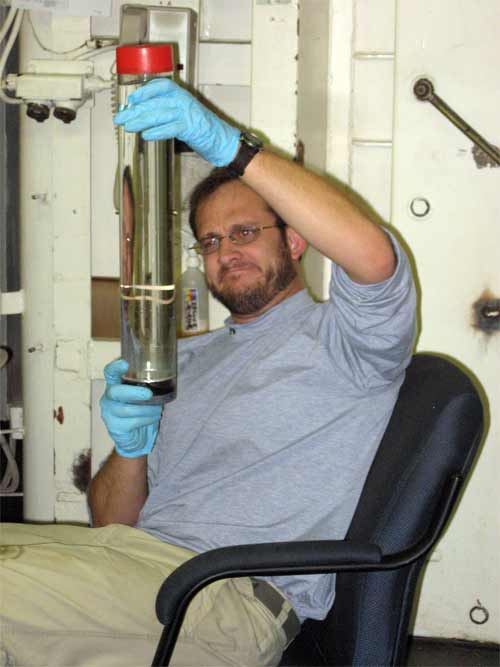
There are many components to the research Pat is working on; one is in collecting particles sinking vertically in the ocean. By using an established brine (denser NaCl) solution in an array of floating tubes Pat is able to catch these falling sediments. The process is to deploy his trap, a series of tubes for the falling sediments held aloft by floats that drift in the ocean, for no more than 24 hours.
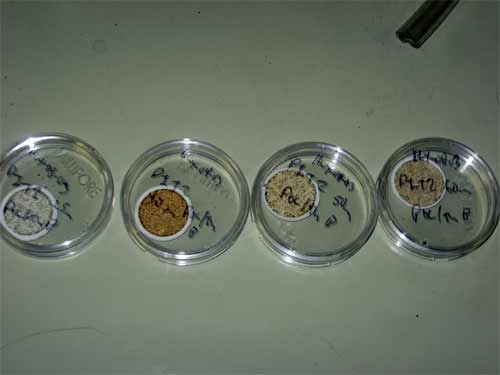
When collected, Pat will remove the sediments from the brine, looking at the thorium and organic carbon, there is a relationship between these two elements and Pat wants to focus particularly on the carbon. Now this is where it gets sticky for me as I am not a chemical oceanographer. Pat is looking at the carbon flux. The team wants to look at the carbon transfer as it changes from atmospheric carbon, to organic carbon in the oceans, thus taking it out of the carbon cycle.
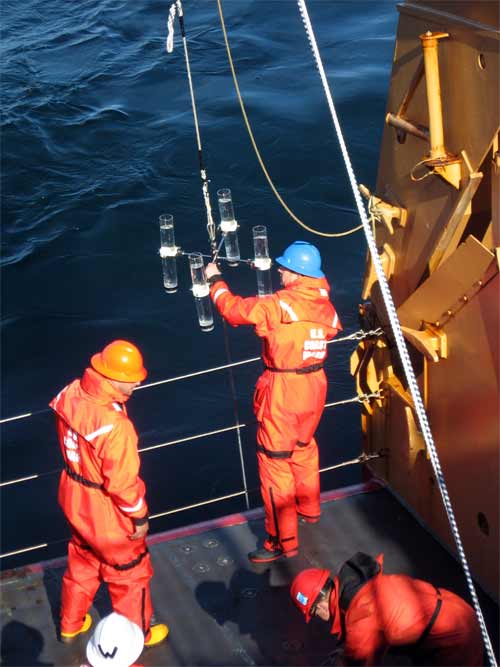
One of the underlying questions in this component of the HEALY research is how the oceans will respond to all the increased carbon due to global climate change. Pat's group is actually looking at carbon cycling in many different oceans, with their hypothesis: The arctic will respond faster to increases in carbon (changes more apparent, faster), due to decreased ice, and the fact that it is dark for ½ the year. Think of it this way, after a long dark winter with good nutrient build up, a higher yield is to be expected with 24 hours of sunlight.
The sinking particles Pat studies are also very important to the benthos species providing nutrients and food as they sink.
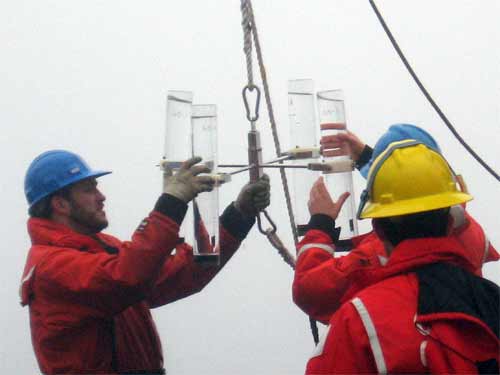
Like many of the scientists on board, Pat is doing multiple investigations. The ocean as I talked about before is layered and Pat's team is looking at productivity in the mixed layer using 02 isotopes. This data will give the scientists the rate that phytoplankton is growing.
The team also uses radium isotopes to estimate advection of deep water to the surface along the shelf break. The information will tie in with the scientists studying iron. There is belief that the iron is up welled from the sediments in the deep water to the surface layers.
I am still learning about the chemistry of ocean science, and do not fully understand all of Pat's research. I do though see that everything is intimately linked, that all components of this ecosystem are dependent upon each other and if one component is changed then ALL will change as well.
Photo of the day:
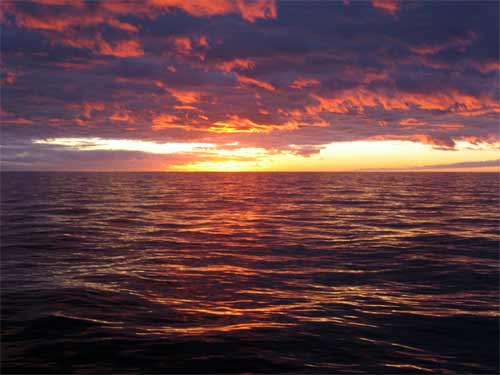
Quote of the Day: Come forth into the light of things, let nature be your teacher. -William Wordsworth
FOR MY STUDENTS: No question for today, go out and enjoy the sunset!


Comments